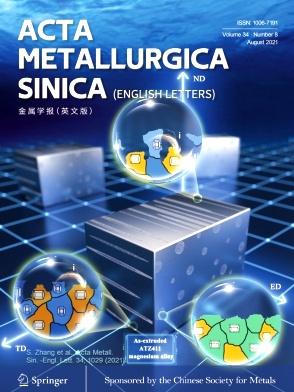Quasi-in-situ Observation of Interfacial Behaviours: Recrystallization and Grain Recombination during Micro-deformed Diffusion Bonding Process
Abstract
The interfacial behaviours of micro-deformed diffusion bonded joints were systematically revealed. There were two typical bonding interfacial characteristics: “bond line” and migrated grain boundaries. “Bond line” was featured as fine grains and phases on the interface. The critical temperature of joint characterized by “bond line” was 950 °C. The increased temperature 1000 °C was a critical temperature which interfacial characteristic “bond line” eliminated. The second type was characterized by interfacial migration over 1000 °C, in which the bonding interfaces were composed of straight grain boundaries, triple junctions, and protruding and expanding interfacial migrated grains. Additionally, two different interface migration and joint forming mechanisms were observed with elevated bonding temperature: recrystallization and grain recombination. The first one was the discontinuous dynamic recrystallization mechanism, which was observed in the joints bonded at 950 °C and 1000 °C. The second mechanism was the grain boundary migration mechanism based on the grain growth mechanism, of which the typical bonding temperature was 1050 °C. The joint was bonded under two kinds of grain boundary migration, including strain-induced interface grain boundary migration and interface grain boundary migration at triple junction.


 求助内容:
求助内容: 应助结果提醒方式:
应助结果提醒方式:


